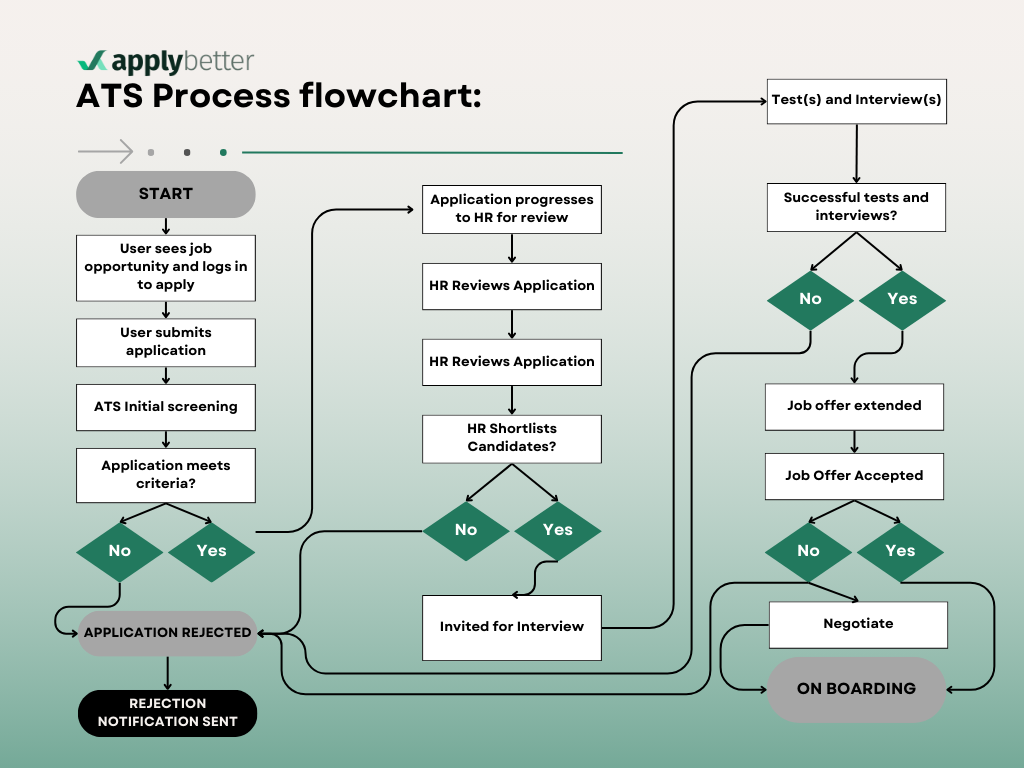Post Outline
- What is a CV?
- Cracking the ATS Code
- Components of a CV
- Your CV: A Tech Industry Passport
- Considerations for Different Levels
- Explaining the Gaps in Your CV
- Crafting Your Standout CV: The Top 10 Cheat Codes
- Why Cover Letters Are Important
- The Magic of "Apply Better"
- Our Gift to You: The Ultimate CV Template Pack
Job hunting can feel like a full-time job in itself. Between the tedious task of looking through job boards, tailoring applications for each role, and waiting for responses, it quickly becomes overwhelming. Considering that getting interviews is a numbers game, increasing the chances of getting called back is crucial. Let's dive into what makes a great CV and how you can use it to land your dream job.
Understanding the CV: More Than Just a Resume
A CV (Curriculum Vitae) is a detailed document that highlights your professional and academic history, kind of like an Instagram reel, where storytelling is center stage. Unlike a resume, which is typically one page, a CV can be several pages long and includes extensive information about your academic achievements, work experience, skills, publications, awards, and more. A resume is short, punchy, and very job-specific. Imagine applying for a tech role at a pre-launch startup. Your resume would be a single-page document showing your coding skills and recent projects, while your CV depends on your career type (Academic, medical, and legal careers) and is more suitable to applications for schools. If you’re working in one of these professions, you’ll definitely use a CV. Most other careers use a résumé. Your CV should cover your entire tech journey—from that Python course you took while still in the University studying Law, to the Fintech mockup you built in your garage. It's not just what you've done; it's the story of how you became the tech wizard you are today. The key differences are:
- Length: CVs can be multiple pages; resumes are usually one page.
- Content: CVs include detailed academic and professional histories; resumes focus on relevant experience and skills.
- Usage: CVs are common in academia and in international organizations; resumes are standard in most industries in the U.S. and Canada.
Cracking the ATS Code

Ever felt like your applications vanish into thin air? It probably did! Most companies use Applicant Tracking Systems (ATS) to sift through the sea of CVs. The ATS is the bouncer at an exclusive club. It scans your CV for relevant keywords for your role—like "Python," "Project Management," or "ACCA"—and if you don't have them, you're not getting in.So, how do you get past this digital gatekeeper? Tailor your CV with keywords from the job listing. If they want a "Node.js expert with React experience," or a good to have for the role is “Operations Manager with experience running their own business”, make sure those terms are in your CV. Once you do, the doors swing open.To pass an ATS, your CV must:
- Use standard headings and formatting.
- Both Résumés and CVs should be customized for each job application with action words (keywords from the job listing) that highlight the most relevant work experience and skills for that specific job description.
- Avoid graphics, tables, and non-standard fonts.
Use apply better FREE for one month
Our platform automatically adapts your CV to suit roles using Artificial Intelligence.
Join for freeComponents of a CV

- Contact Information: Your full name, professional title, phone number, email address, LinkedIn profile, and home address.
- Professional Summary: A brief statement summarizing your career goals and key qualifications. When considering how to write a professional summary, focus on your unique strengths and experiences.
- Work Experience: Detailed descriptions of your previous jobs, responsibilities, and accomplishments.
- Education: Information about your degrees, institutions, and graduation dates.
- Skills: A list of relevant skills, both technical and soft skills.
- Additional Sections: Certifications, publications, awards, languages, volunteer work, and hobbies.
A Tech CV: Your Industry Passport
In the tech world, your CV is more than a document—it's your industry passport. Unlike in finance or marketing, where work history reigns supreme, tech CVs are all about your skills and the projects you’ve worked on.Are you a recent boot camp grad applying for a junior developer role? Your "Work Experience" section might be slim, but don't sweat it. Instead, you can beef up your "Projects" section and balance out what is lacking. That e-commerce site you built for a friend? That's your golden ticket. In tech, what you can do often speaks louder than where you've worked.
Considerations for Different Levels (Entry-Level, Mid-Level, C-Suite)
- Entry-Level: Focus on education, internships, and transferable skills. Highlight any relevant projects or volunteer work. If you're wondering how to write a CV with no experience, emphasize your educational background and any volunteer work, making sure to include any side quests (projects) that show your potential.
- Mid-Level: Emphasize work experience, key achievements, and leadership roles. Show career progression and measurable outcomes.
- C-Suite: Highlight strategic accomplishments and industry influence, telling a story on industry trends you’ve shaped. Focus on leadership skills and high-level responsibilities.
Explaining the Gaps in your CV

But what about those gaps in your story—the times between jobs or when life threw you a curveball? Don't try to hide them; everyone's story has quiet chapters. Maybe you took time off to care for family, travel, or upskill. In your cover letter, frame these periods positively. That year you took coding classes while job-searching? It shows resilience and a hunger to grow.
- Be Honest: Always be truthful about gaps in your employment.
- Explain Briefly: Use your cover letter to explain gaps, focusing on what you did during that time (e.g., further education, volunteer work, personal projects).
- Keep the Gaps Positives: Emphasize any skills or experiences gained during the gap period that are relevant to the job you're applying for.
Crafting Your Standout CV: The Top 10 Cheat Codes
- Tailor Your CV for Each Application: Customize your CV for each job you apply for by aligning it with the job description.
- Use a Professional Summary and tagline (Job title): Write a compelling summary that highlights your career goals and key qualifications, indicating how those qualifications can help that specific role.
- Focus on Achievements: In your work experience section, focus on what you achieved in each role rather than just listing duties.
- Include Relevant Keywords: Use keywords from the job listing to help your CV pass the ATS. Knowing how to write a CV to pass ATS can significantly increase your chances of getting noticed.
- Highlight Technical Skills: Especially important for tech roles, ensure your technical skills are prominently displayed.
- Keep It Concise: Be clear and concise, ensuring your CV is easy to read.
- Use Bullet Points: Bullet points make your CV easier to scan.
- Proofread: Ensure there are no spelling or grammatical errors.
- Include a Cover Letter: Always include a well-written cover letter that complements your CV.
- Update Regularly: Keep your CV updated with your latest skills and experiences.
Why Cover Letters are Important
A cover letter complements your CV by allowing you to:
- Explain why you are interested in the position.
- Highlight how your skills and experiences make you a good fit. Learning how to write a CV and cover letter together will give you a complete application package.
- Demonstrate your writing ability and attention to detail.
- One tip would be to give very specific details on what you would achieve in the organization when you get the role. You can include a 90-day work plan in the cover letter to show them you mean business.
The Magic of "Apply Better"
You know how Netflix suggests shows to you and you feel like they just get you? That's what "Apply Better" does. Using our AI wizardry, we scour the internet for jobs that match your unique skills and aspirations. No more sifting through irrelevant job postings. "Apply Better" brings your dream jobs right to your dashboard. We find the jobs and apply on your behalf, by crafting and adjusting your CV and cover letters to intelligently fit the role. But here's the real game-changer: Auto Apply. Picture this—you're doing laundry on a fine Thursday morning, meanwhile, "Apply Better" is out there, not just finding your perfect jobs but actually applying to them on your behalf. It's like having a personal job-hunting assistant who never sleeps. Increasing your odds of landing the perfect job will be taking the number of applications from 10 to 300 a week. Remember, it’s a numbers game.
Our gift to you- The Ultimate CV Template Pack
Want to level up your CV game even more? We've created the "Ultimate CV Template Pack" just for you. This isn't just another template—it's a full toolkit designed for professionals at every level.

What's inside:
- Entry-level, Mid-level, and C-Suite CV templates, each tailored to showcase what matters most at your stage.
- An ATS-friendly layout that looks great to both machines and humans.
- Cover letter templates
We wish you good luck in your job hunt.



